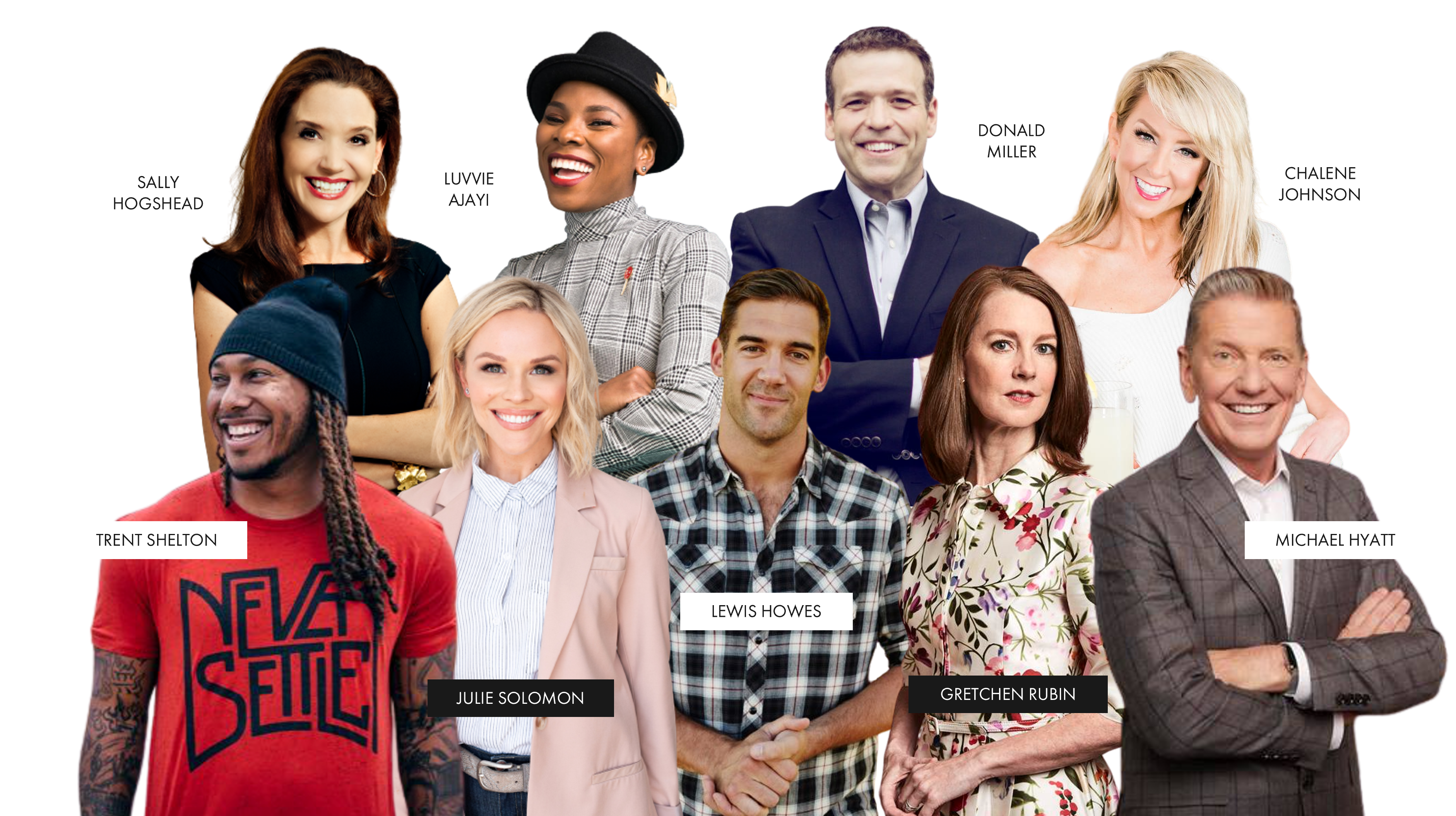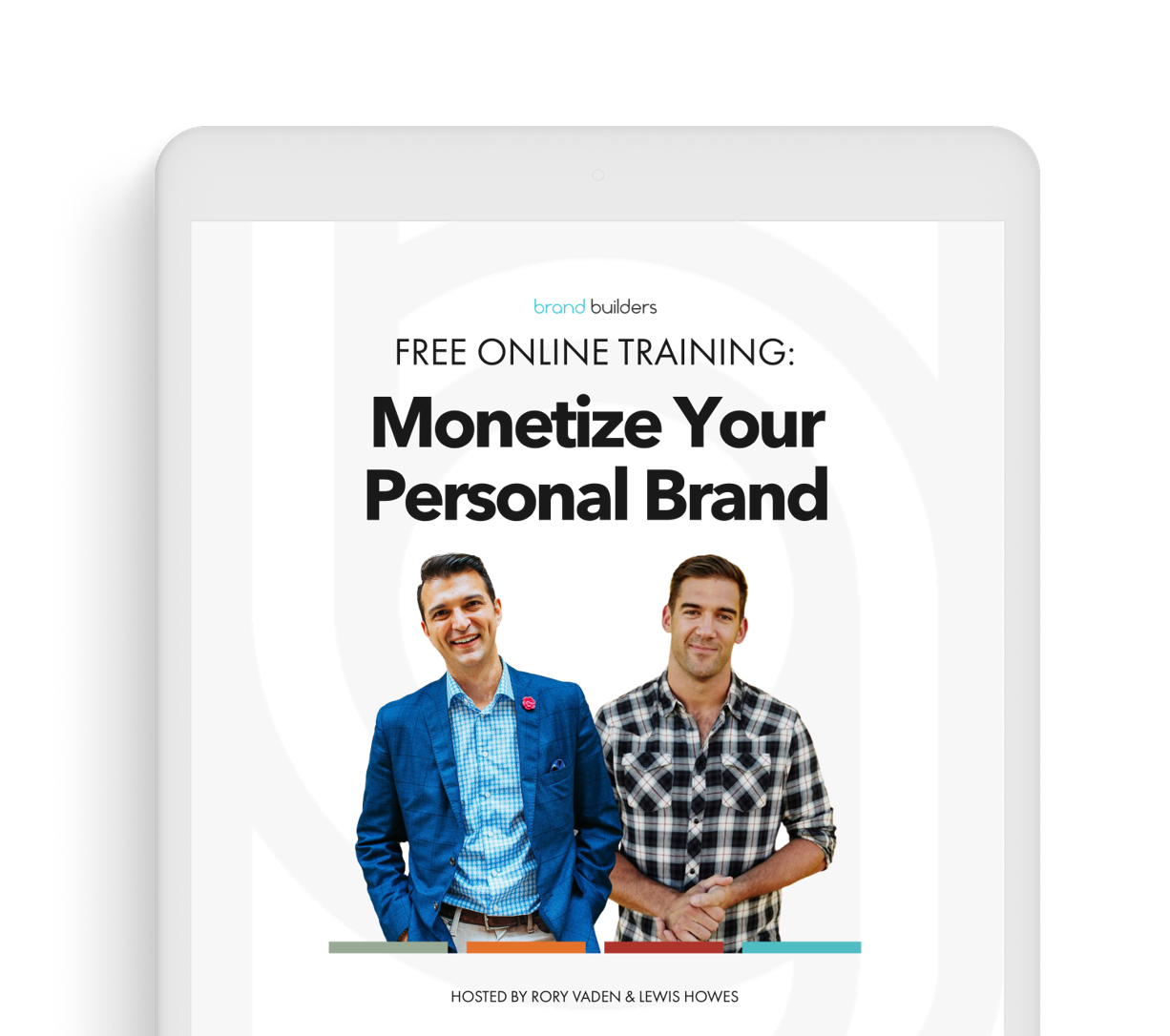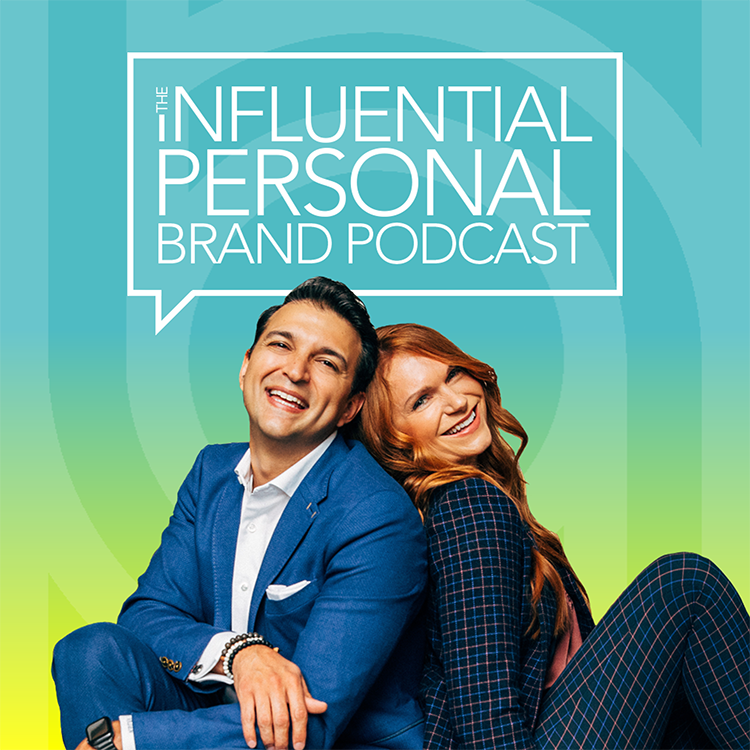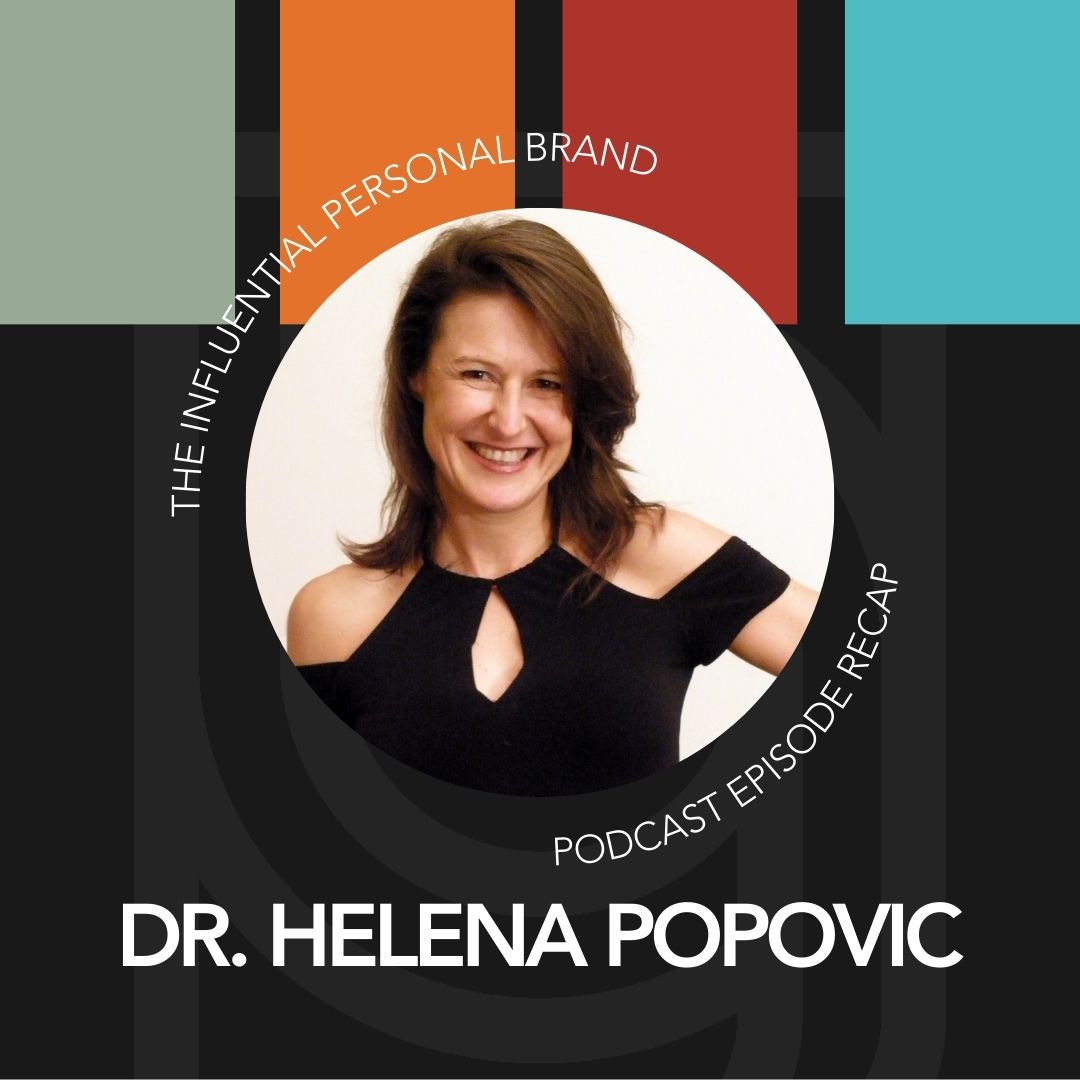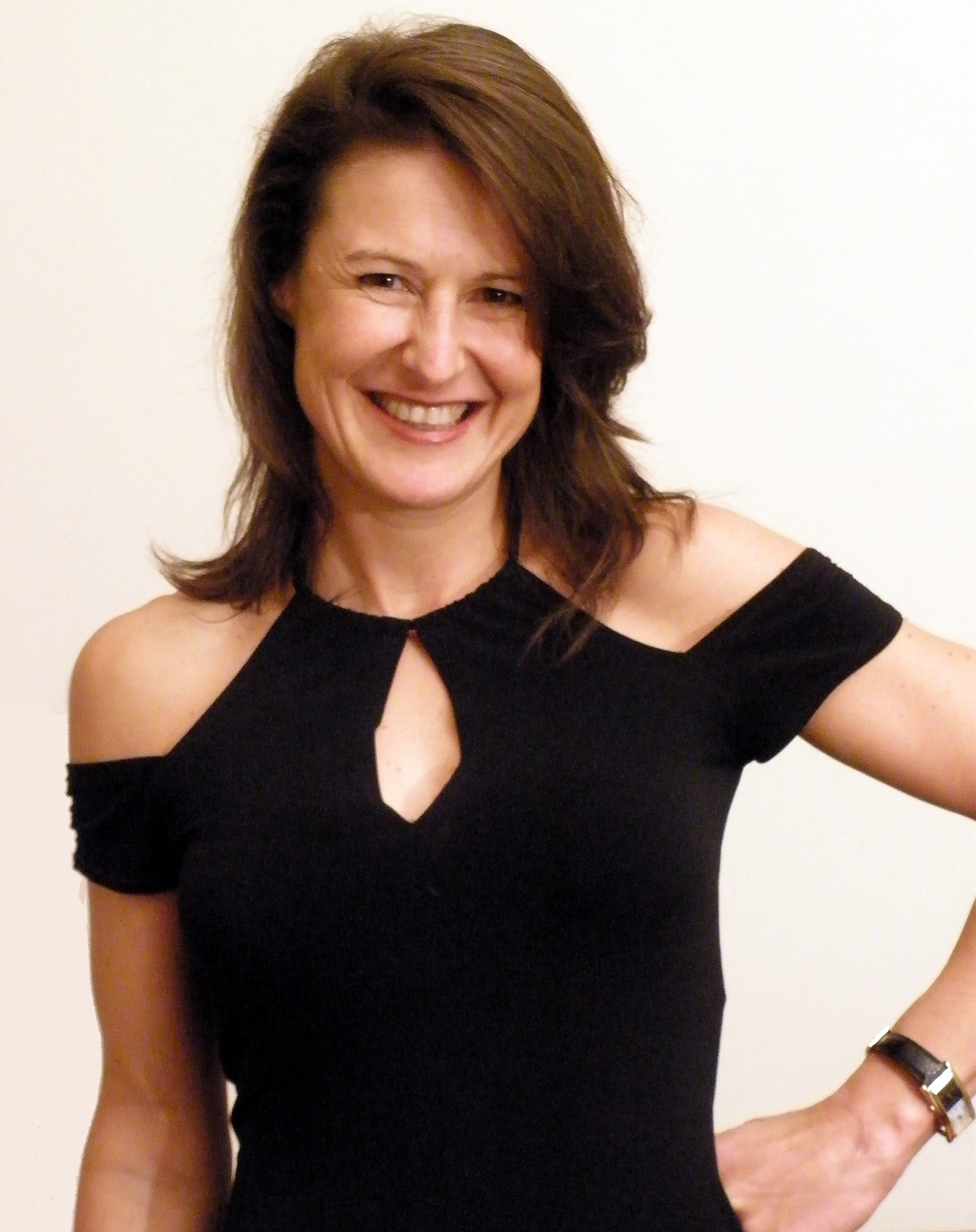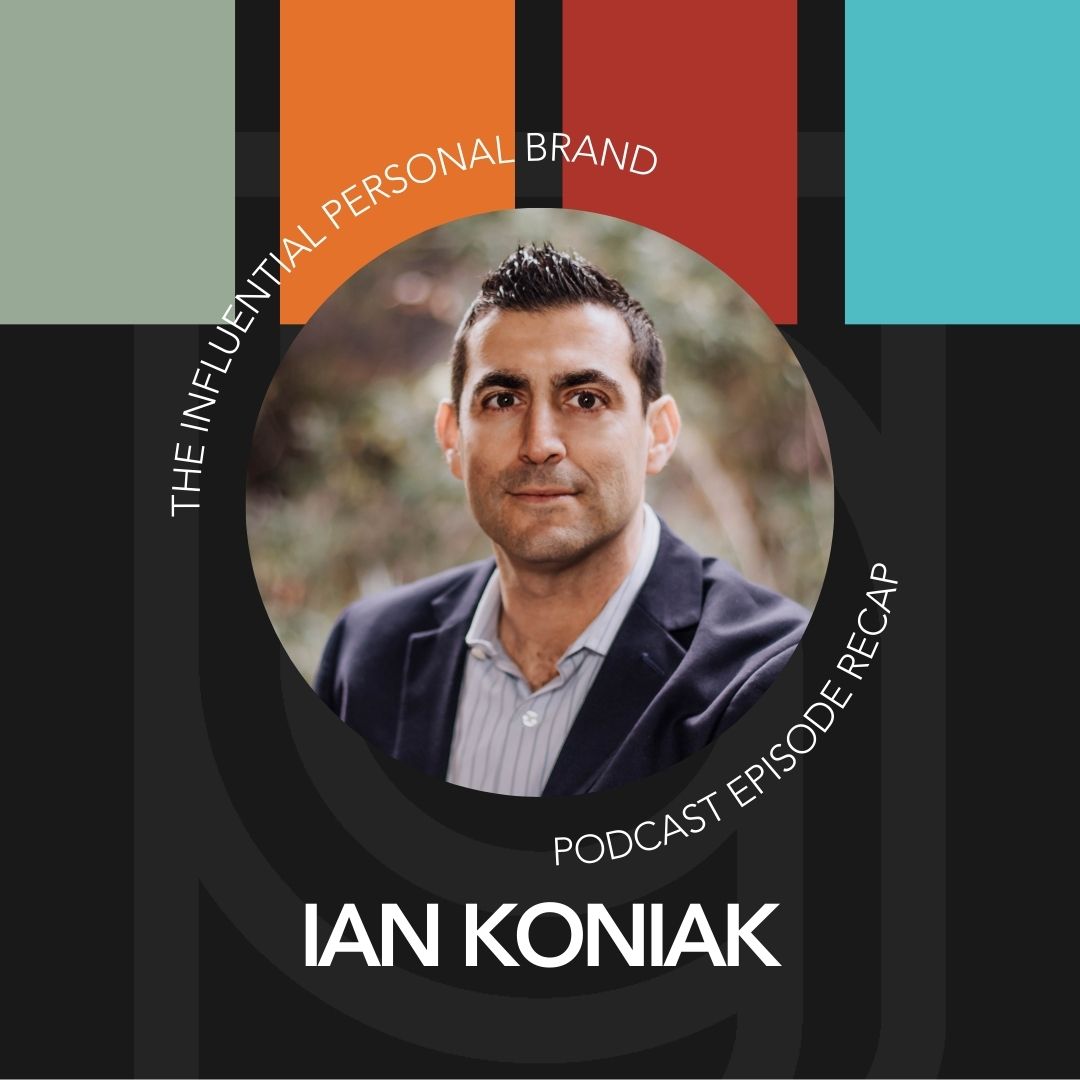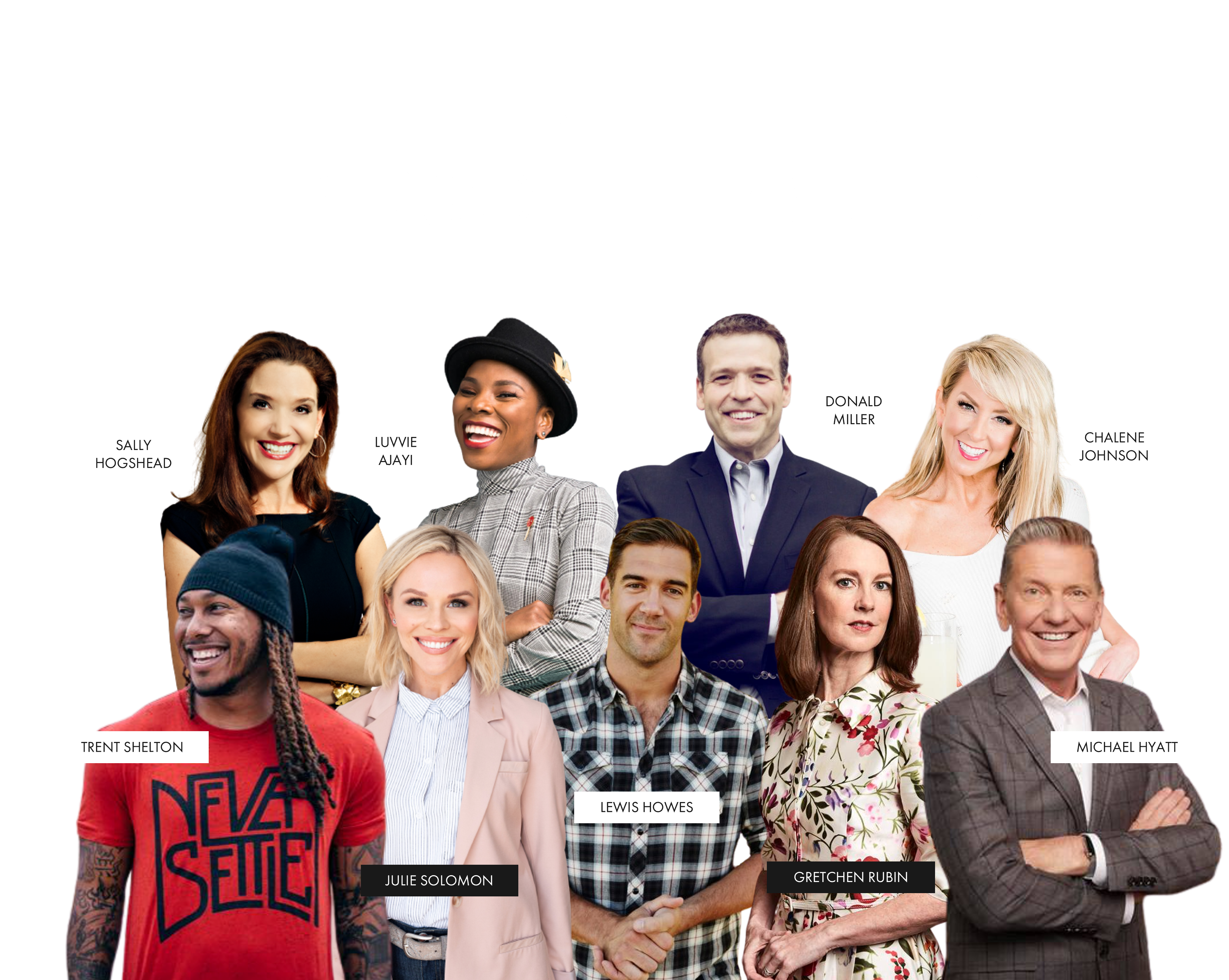RV (00:06):
Welcome to the Influential Personal Brand podcast. This is the place where we help mission-driven messengers, just like you learn how to build and monetize your personal brand. My name is Rory Vaden, and I’m the co-founder of Brand Builders Group, a hall of fame speaker, and New York Times bestselling author. And this show is to help experts learn how to become more wealthy and well-known. I know you’re gonna love it. Thanks for being here. Let’s get started. Over the course of my career, I have had to cold call a lot. I knocked on over 20,000 doors when I was in college as, as a door to door salesperson. After I finished graduate school, I then worked for an enterprise software company selling anti-spam like spyware and anti-spam filtering software to large corporate enterprises. And then my wife and I built an actual sales consulting company where we cold called on large companies and small companies to train their salespeople how to sell.
RV (01:08):
And as an author, I’ve, I’ve cold called on literary agents as a speaker. I’ve cold called companies to get speaking engagements. I’ve made tens of thousands of cold calls. And how you open your cold call makes a big difference. And, and when it comes to cold calling, I think most of us get super nervous and super, like when we’re nervous and when we’re afraid and when we’re scared, it’s usually about nailing those first 30 seconds. Like we’re most nervous about what do we say and what happens in those first opening seconds? And it really is important that you get it right. And most people don’t. Most people get it wrong. In fact, most of the sales trainers and most of the scripts that you ever come across are awful. They’re, they’re terrible. They’re stupid. Like they, they’re, they’re, they’re horrendous. They don’t make any, they don’t work like and so I wanna talk to you in this video, I’m gonna share with you first of all the mindset of what we’re after here when we are cold calling.
RV (02:04):
And then I’m gonna talk you through the, the two most common mistakes that we see when we watch people, like when we’ve coached people who are cold calling, or the mistakes that I, I have made, right? I mean, out of 30,000 or, you know, more thousands and thousands of cold calls. I’ve made a lot of these mistakes myself. So I’m just gonna share with you the things that don’t really work. And then I’m gonna share with you a three step process here towards the end of exactly what you should do when you’re making cold calls. If you want to nail those opening seconds and, and have an actual chance. First of all, let’s talk about the mindset, right? What is, what’s the, what’s the mindset here? The, the mindset is serving, not selling, right? That’s everything that we’re about at brand builders groups, service centered selling.
RV (02:48):
So the mindset is always serving, not selling. So the mindset isn’t how do I trick someone? It’s not how do I manipulate them? It’s, it’s not what’s the, the ninja, voodoo tactic that I can magically say that’s gonna somehow take someone who wouldn’t buy and make them a buyer. I’m not trying to like sneak something under their radar, right? That’s not what it’s about. Now, service centered is, is being confident. It’s being direct, it’s being confident. It’s also being aware that for many people, the answer’s gonna be no. And that’s okay. Your job as a service centered salesperson is not to magically take someone who’s a no and make them a yes. And that’s not your job. If you think that’s your job, that is gonna create pressure on you. That’s not the job of a service centered salesperson. The job of a service centered salesperson is to find all of the people that could genuinely benefit from your product or service.
RV (03:43):
That’s it. To find all the people who could benefit from, from your product or service, and give them a genuine, honest look, a genuine opportunity to buy what you are, what you’re selling, or, or to show them, right? I, I often don’t even think about it as like, my job is to sell. My job is to find them, and my job is to show this to them. It’s really their job to decide whether or not it’s the fit. And right there is the mindset shift, right? Like, it takes you from that adversarial of like me against you. And this is like some type of a, of a combat where I’m, I’m given some manipulative, high pressure, slimy sales tactic from some video you saw on the internet, like, or, you know, one of these old school sales training manuals or something. It’s not that, right?
RV (04:31):
It’s just being direct and saying, Hey, here’s who I am. This is what I got. This is who I talked to. Can, can it help you? Right? So I want you to understand that that mindset, like your job is not to sell. Your job is to serve. Now that said, you’re going to, you’re going to be dealing with some, some sales resistance, right? People have a natural resistance to being sold something because of all the bad advice and because of the, the decades of horrible training that has gone on, you’re gonna have to combat some of that. So your internal mindset is one of, of service. Also externally, the things that come out of your mouth, they should sound more like you’re talking to a friend and less like you’re giving a formal pitch. And you’ll, we’ll, we’ll, you’ll understand here when we talk about some of these mistakes.
RV (05:21):
But, but I want you to, to approach the whole thing as it’s not adversarial, right? You are, it’s not you versus them. It’s you in service of them. You’re there to see if you can help them. And if they’re gonna say no, if they’re gonna reject, reject you, they’re not rejecting you. They’re, they’re rejecting this thing that you have. And so that takes a lot of the pressure off of you right up front. In fact, one of the things that we say at Brand Builders Group all the time is there is no fear when the mission to serve is clear. If you shift this sales encounter from one away from the idea of it’s me versus them, and you shift it too, it’s me for them, it’s me with them, it’s me coming around and sitting on, on their side, and then I’m gonna talk to them the way that I would talk to a normal person, like the way that I would, that I would talk to a friend, the, the way that I would talk in real life, not the way that a robot would sound, or some weird cheesy professional salesman with sound.
RV (06:18):
Okay? So that’s, that’s the mindset. Now, let’s talk about the mistakes. Okay? So here’s, here’s the most common mistakes. Mistake number one is leading with your company name, right? So if you say, Hey, it’s Rory Vaden from Brand Builders Group, that is a mistake. Why? Because they’re not gonna recognize your company name most likely. And whether they do or they don’t, that’s not how friends talk to each other, right? You don’t call someone and say, call your buddy and be like, Hey, it’s Roy from Brand Builder’s Group. What’s up, man? You wanna hang out? Like, that’s not how we talk to in real life. It’s not how we talk to normal people. Now, by not sharing your company name, I’m, we’re not trying to be misleading. We’re we’re not trying to hide anything. We’re not hiding anything. We’re just going, look, if my job is to honestly serve them, if my job is to help them take an honest look at what I have, if, if my job is to present to them something that may or may not help them, I have to give them a, an honest chance to do that.
RV (07:18):
And so I also don’t wanna do anything that is going to negatively, you know, work against that opportunity. So anything that immediately signals and, and, and ties into their fear that I’m just, you know, some slimy salesperson or something, I wanna stay away from that, right? I just wanna have an honest human conversation. And so usually I will stick with first names if I’m cold calling, right? So, you know, say, you know, Hey, is it Lisa? Hey Lisa, this is Rory. Why? Because that’s how people talk to each other, right? You call your friends usually by nicknames and stuff like that. You don’t call and you don’t use people’s last names. So I want to create this sort of friendly conversational tone, just like I would in real life, talking to a real life friend. So don’t lead with your company name. The other thing is don’t ask them a question right away.
RV (08:08):
Now, I’m a fan of questions, questions are good questions. Great sales is more about being a great question asker than a great talker. I really believe that. And there is a place for questions, and we’re gonna use a question here soon, but don’t, don’t start your conversation with like, Hey, Lisa, it’s Rory. Do you have a minute? Like, nobody has a minute, okay? Nobody does. Like, nobody has spare time. There’s not a, there’s not a sales call that I’ve ever made where someone was like, you know what? I was just looking for someone to talk to. Thanks for calling. Like, I, I, I, I actually would love to talk to somebody. They don’t like, they’re busy, right? They, they, they, they weren’t sitting around waiting for you, and it accomplishes zero by asking them if they have time. If they have a minute, also, they go, how you doing?
RV (08:53):
I don’t care. I don’t care to tell you how I’m doing. Right? So that, that kind of cheesy fodder, that pandering, it doesn’t work. It’s just not helpful. You’re not, it doesn’t serve them in any way. And, and what we want is we wanna serve them. We wanna be useful to them. So we wanna shape the conversation to be helpful for them right away. And, and doing a question is going to create that, that sales resistance right up front because they go, man, I don’t know you. Like, that’s what they’re thinking, right? They’re going, man, I don’t know you. Like, who are you? What? Like, why are you bugging me? That is what they are afraid of, all right? So don’t do that. Don’t do one of those two things. Don’t lead with your company name. Don’t use your last name. And also don’t ask them some frivolous question.
RV (09:38):
Don’t pander to them. Those are telltale signs that you are a cheesy salesperson, that you are just another solicitor, right? Talk them in a normal voice. Use first names, okay? And, and now let’s talk about the three step process for how you do want to execute that call. Step number one, we’ve already talked about this a little bit, is a conversational tone. You’re going to use first names not last names. So you’re just going to make sure that you say, Hey, Lisa, this is Rory. Okay? Not this is Rory Vaden, because you don’t introduce yourself with last names like you do. I mean, that, that is a sign that you’re a stranger, right? Now that said, I’m not gonna introduce my last name, but the very first thing that I’m gonna say after my name is I’m gonna acknowledge the fact that we haven’t met yet.
RV (10:29):
Why? Because I’m gonna come forward with that. I’m gonna say, look, I know that you’re thinking, who the heck am I? And I don’t need you to rack your brain. I wanna let you know that we haven’t met yet. So I’m gonna take a confident stance of, of making it clear that we don’t know each other, but maybe we should, but also maybe there’s no reason for us to talk, okay? So I wanna sort of stand confidently in this space. And so a line, there’s many different ways you can say this, but an example of a line you would use is you would say Hey, is it Lisa? Hey Lisa, this is Rory. And you and I haven’t had a chance to meet yet. Or I’d say, Hey, Lisa, this is Rory, and don’t worry, don’t try to rack your brain thinking about where we’ve met because we we’ve not been introduced to one another yet.
RV (11:10):
Something like that. So I’m going to let her know, or him right up front that we haven’t met. That’s, that’s part of the relationship. So they go, okay, great. So now I have, I’ve just opened the door. Instead of getting an immediate door slammed by going, oh my gosh, you know, hi, this is Rory Vaden, okay, slam, I don’t know, Rory Vaden, hi, this is Rory from Brand Miller’s Group Slam. Like, I’ve never heard of your company. Hey, this is Rory, how you doing? Slam? You sound like a salesperson. Why? I say, Hey, is it Lisa? Hey Lisa, this is Rory. And you and I haven’t had a chance to meet yet. Okay? I got, I got a little window here, not much, right? But I’ve bought myself an extra half a second, which is all I need to execute step two, okay? So step one of how to do this right, okay?
RV (11:58):
Is to, is to let them know that you haven’t met yet, and be right up front, be open, be honest. If there’s any chance of someone giving you an extra second is through honesty and openness. So that’s what we’re gonna do. Let them know that we haven’t met yet. Now, that gives me a, an opportunity, a fraction of a second to get to step two, which is to use this phrase, the reason, this is a magical phrase. The reason, the reason I’m calling you there is a, a, a psychological trigger that happens when you hear the reason everybody p peaks interest, right? They tune in, they pay attention because you go, great. You are getting to the point. Now, here’s another common mistake is people say, Hey, this will only take a minute. I’m not a fan of saying that, because first of all, they don’t have a minute to waste.
RV (12:51):
And I, it’s almost like I’m saying, Hey, if you can just endure this for a second, that that’s not it. And I don’t wanna say I’ll get to, I don’t wanna waste time saying, I’ll get to the point. I wanna just get to the point. And that’s what they want too. They don’t wanna hear you say, you’ll get to the point, they just wanna hear you get to the point. So get to the point. So you say, hi, is it Lisa? Hey Lisa this is Rory and you and I haven’t met yet, but the reason I’m calling is, and so right there you have these, all of these things happening, firing in that opening moment. We’re using first names, right? We’re not using last names, we’re not using company names, we’re keeping it casual. We’re talking the way that we would talk among friends, yet I am openly, transparently, and honestly letting her know that we haven’t met yet.
RV (13:37):
Okay? So now she doesn’t have to worry about is this a, like, is this a weird something going on? Or like, who is this person? Say, Hey, we haven’t met yet. So I’ve got the slate clean. And now in step two, I’m saying, the reason I’m calling is I’m not telling her I’m getting to the point. I’m just getting to the point. Don’t waste time telling people that you’re gonna get to the point, just get to the point by using the phrase, the reason, the reason I’m calling is, and then here’s step three, and this is where their magic happens. If you’ve never done this before, this will sound different to you. But this is different because this is not what most people do which is one of the reasons why it works. Okay? And here, here’s what I want you to do. Talk about who not what.
RV (14:24):
In other words, don’t talk about what you’re selling. Don’t talk about what company you are from. Talk about who are the kind of people you talk to. Alright? So I’ll say that again, don’t talk about what, talk about who are the kind of people you talk to. And we’re gonna do this in two ways. We’re gonna first start generally, and then we’re gonna be specific. And when you talk about who not what, this is the magic. And, and if there is a secret trick to great cold calling to it to oring, it is this, it is talking about who not what. Now, I wanna let you know, like there’s no ultimate secret here. A lot of this is just a numbers game. A lot of this is you’re just gonna deal with rejection. A lot of this is you have to just do hundreds and hundreds and thousands of thousands of calls until you get comfortable doing this kind of a thing.
RV (15:14):
But if there’s a secret, if there is a, if there’s a magic strategy, a magic technique that will tip the odds in your favor, it is talking about who not what. And there’s two types of who. There’s the general and the specific. Okay? So let’s, let’s talk about the general. So I’ll say, the reason I’m calling is because I am the one talking to all of the, and then usually I will insert the job title, and then I will insert like the, the area, the geographic region. So when I was knocking on doors when I was in college, I would say I’m the one talking with all the moms, with students here in the blankety blank school district or with students here in, you know, whatever, Nashville, Tennessee, or Brentwood or Davidson County. I would say, I am talking to the who. This is super powerful.
RV (16:05):
I mean, I’m telling you this works in all different scales, all different environments. So when I was selling enterprise software solutions, I would say, Hey, I’m the one talking with all the IT directors for all the, all the large, you know, software companies or all the, all the companies based here in Cherry Creek, Colorado, for example. So I would say the who, the job title in the region, like the geographic region. You could also say in an industry. So if you’re calling by verticals in industry, right? You could say, you know, I’m the one talking with all the, all the, you know, mortgage bankers here in the western United States, but make the geographic region, the more specific, the more terrific. So, so narrow the region or narrow the industry as much as you can. And because it shows credibility, and it, it shows, it shows specificity, which is what you want.
RV (16:56):
Because you what, here’s what happens psychologically when they hear that you are talking to all the IT directors for all the companies in Cherry Creek, Colorado, or all the moms in the Davidson County School District. Or if, if I’m calling to sell, you know, a keynote speech, I might say, I’m talking to all the event coordinators for all the companies who have events in Orlando. Now it shifts from who are you? ’cause I’ve just said, who am I? This is what I’m doing. And it shifts to them asking the question, am I the right fit? Right? So the it, it turns their focus psychologically from who, who are you? I don’t know if I like you. What are you doing? And all this sort of like sales resistance to am I the right person that you’re trying to reach? And that’s good because we want them to be thinking about themselves.
RV (17:47):
All of sales is about that. All of sales is getting them to shift the focus away from you as the salesperson and onto them and their situation and their needs. And so by letting them know who are the kind of people that you’re talking to, then you’re, you’re more likely to create a connection with them. Or they might say, oh, that’s not me, and that’s great. So we just saved the whole conversation. They can put you in touch with, with the right person. So lead with the who and say the job title from the geographic industry or, or the geographic region, or say the job title of people in this industry, or whatever vertical or territory that you are working in terms of whatever your sales territory is. Okay? That’s what we wanna see. So that’s the general, and it immediately has them going, am I qualified?
RV (18:35):
Like, am I the right person? Am I, am I the right candidate? And that shifts the focus off of you, the salesperson, and on to them, which is what we want. We want the whole conversation, the whole relationship to, to not be focused on you, but on them and their needs. So I’ll say, Hey, Lisa, this is Rory, and don’t worry, you and I haven’t had a chance to meet yet, but the reason I’m calling is because I’m the one talking with all the IT directors for all the small businesses right here in Cherry Creek, Colorado. Now notice how I’m, I’m, I’m narrowing down to the job title. I’m saying the small businesses. So this is like business type and the geographic region. You wanna use as many of those qualifiers as you can when you do this because you want to check and you’re going to use the criteria that they will relate to, right?
RV (19:23):
You want them to, you want them to go, Ooh, I am an IT director of a small business in Cherry Creek, Colorado. That is how you, you, you’re gaining momentum. Now notice all of it’s happening in their mind. That’s all, all of sales is communication, it’s human behavior, it’s psychology. So most of the conversation is, is happening in their mind. And that’s what we’re designing this to in a way to make it comfortable for them. This isn’t about magically squeezing your way past them or manipulating them. This is putting them in a state of psychological comfort. It is helping them self-identify quickly are, is this a conversation worth having? So, hi, is it Lisa? Hi Lisa, this is Rory. And you and I haven’t had a chance to meet yet, but the reason I’m calling is that I’m talking with all the IT directors of the small businesses in the Cherry Creek, Colorado area.
RV (20:16):
That’s the opening, that’s the general who. Now I’m gonna follow up with the specific who and the specific who is, I’m going to use examples of the other people that I’m talking with. So I’m going to use the names of our preferably clients, okay? Now, typically, you know, there’s some logistical details here and some legal implications in, in certain scenarios in certain industries. So one of the things you wanna do is get the permission to use the, the name, image and likeness of your clients. This is more of a contract thing. Or just at least ask ’em and say, Hey, do you mind if I let people know that we’re working together as I’m out introducing myself to other people, and you just ask for their permission? And you need that so that you can use it here. Now, if it’s your very first day and you don’t have any customers, you can delicately and carefully and specifically mention, these are people you’re talking to, they’re not clients.
RV (21:14):
As soon as you have clients, you wanna use the client’s names because the client’s names give you credibility because of the specificity. Even if they don’t know that person, they probably will know that company, or they will at least relate to the idea that it’s a similar type of person in a similar type of company, in a similar type of geographic region or a similar type of industry as the one they, as the one that they are in. And that gives you credibility, right? So you would ideally, and now if they recognize the clients or if then that’s, that’s a game changer. I mean, that is the secret sauce. That is the magic is if they recognize people that you’re working with. So get the permission to use their name, image, and likeness and use customers as soon as you can. In the beginning, if you don’t have customers, you can just say, share I’ve been talking with, but be very specific that you are.
RV (22:07):
Don’t imply that you’re working together. Just clarify. I’ve been talking to people that some of whom you may know, like so and so and so and so and so and so. But here’s the dynamic of this conversation. The whole dynamic is based on who, not what, who are the kind of people you’re talking to? Who are the kind of people you’ve been working with and, and who are the kind of people that you have relationships with? Notice you haven’t said what company you’re with, what it is that you’re selling. We’re trying to open a conversation based on who. And this is why in some of our other training videos, we talk about using tools like LinkedIn and things to help identify and know and, and have names and references of people that they actually will recognize because of the tools of modern day.
RV (22:52):
But let’s say you didn’t have any of those, you would say, hi, is it Lisa? Hey Lisa, my name is Rory and you and I actually haven’t had a chance to meet yet, but the reason that I’m calling you is because I’m the one talking with all the IT directors here in the Cherry Creek area who all work with small businesses. In fact, you might know some of the other IT directors I’ve been talking to by chance. Do you know Tom Williams over at x, y, Z company? Or maybe you, maybe you know Mike Lorenzo, or maybe you know Jim Johnson or maybe, you know and they may not recognize any of them, and that’s okay, but, but they might recognize the company names. And the more specific, the more terrific. So if you’re, if you’re, if you’re using names, like if your clients, if you actually have clients that are recognizable or they work for companies, you’re gonna gain a lot of traction in that way.
RV (23:44):
I wanna mention, don’t ever use a customer’s name if they don’t, if they tell you not to or anybody’s name, if they tell you not to, but you’re not doing this for you, you’re doing this for them. Why? Because this puts them at ease. This helps your prospect reduce their sales resistance. It helps them reduce this, this friction, this automatic no. And it allows us to have an honest conversation amongst friends, and it allows us to open up what hopefully will be a beautiful relationship. It might be a short relationship if it’s not a fit, but we’re shifting the focus away from me as this cold calling solicitor, and we’re shifting the conversation over to them and their needs by talking about who not what. So for more insights and information on the psychology of influence, make sure that you hit subscribe on my channel. Follow me here below. If you have a question, leave a comment. But this is what I’m spend my whole life studying on the four levels of influence. So I’ll hope you hit subscribe and check out some of our other videos.




